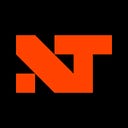The Benefits of Trading Gold Futures vs. ETFs
“Gold is arguably the most watched and diverse commodity in the world,” according to the CME Institute. While gold-specific ETFs such as GLD and IAU offer traders a way to participate in this market, a more efficient and cost-effective way to trade gold is via Gold futures.
Operated by the CME, COMEX offers 2 different futures contracts to trade gold:
- Gold Futures (GC) is the world’s leading benchmark gold futures contract offering consistent high liquidity to traders & investors.
- Micro Gold Futures (MGC) deliver a smaller contract size for active traders looking to participate in the physical gold market with less financial commitment.
7 Benefits of Trading Gold vs. ETFs
- Leverage: A gold futures trader has roughly 15X leverage on a gold contract, or in other words, $1 is leveraged to control roughly $15 worth of gold. This is much greater leverage than even the most aggressive of gold ETFs, offering 3X leverage at best. *
- Liquidity: The average daily dollar volume in GC futures is $52 billion, 54 times the average daily turnover of the SPDR Gold ETF in Q4 2019. With such high liquidity in the gold futures market, traders can enter & exit positions in both directions with ease.
- No Fees: Gold futures do not accrue management fees, which are charged to a gold ETF position each day the position is held.
- No Additional Company Risk: ETFs which track gold can be exposed to additional company risks which are unrelated to the value of gold. For example, the SPDR Gold Trust can liquidate if the net asset value drops below $50 million, regardless of the strength of the gold market. Trading gold futures does not carry such company-specific risks.
- Near 24-Hour Access: Gold futures trade nearly 24 hours a day, 6 days a week, making it a popular and desirable futures instrument all over the world. Compared to the stock market’s regular trading session of 6.5 hours, 5 days a week, gold futures offer more trading opportunities and the ability to manage positions any time of day.
- Gold Futures Tax Benefits: While gold ETF holdings are treated as a “collectible,” subject to large capital gains tax, gold futures gains & losses are taxed at the 60/40 rule (60% long-term capital gains rate, 40% ordinary income tax rate).
- Low Initial Margin: Initial margin to trade gold futures can be as low as 3% of the contract value. In contrast, the margin for gold ETFs can exceed 50% in addition to broker financing fees.
*Please note: Financial leverage can result in losses greater than the initial margin and traders should be aware of the risks involved in trading futures.
The chart above, created 100% FREE using NinjaTrader, displays 3 months of price action in Gold Futures at a daily interval. A volume-weighted moving average (VWMA) has been added for additional analysis.
Get Started with NinjaTrader
NinjaTrader supports more than 500,000 traders worldwide with a powerful and user-friendly trading platform, deep discount commissions and world-class support. NinjaTrader is always free to use for advanced charting, strategy backtesting and an immersive sim trading experience.
Download NinjaTrader’s award-winning trading platform and get started with a free trading demo with real-time market data today!
This article is intended for educational and informational purposes only and should not be viewed as a solicitation or recommendation of any product, service or trading strategy. It includes content from independent persons or companies that are in no manner affiliated with NinjaTrader Group (NTG) or any of its affiliates. The content and opinions expressed in this article do not necessarily reflect the official policy or position of NinjaTrader or any of its affiliates.
